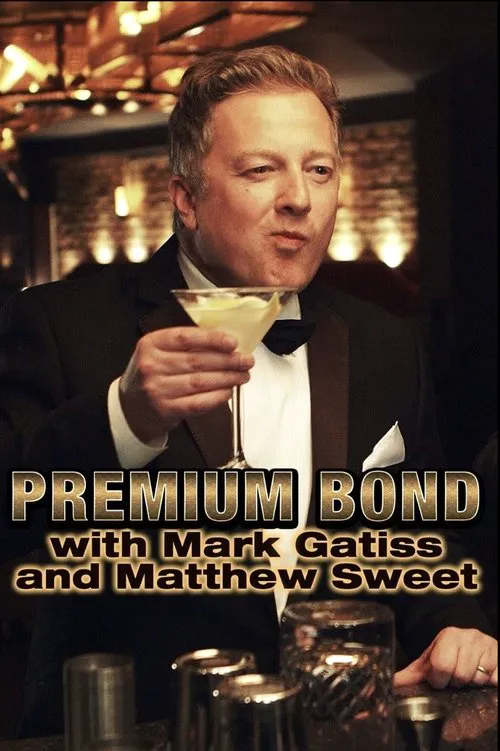Premium Bond with Mark Gatiss and Matthew Sweet

Plot
The room is dimly lit, with only the soft glow of crystal glasses and the subtle flicker of a nearby fireplace illuminating the faces of Mark Gatiss and Matthew Sweet. Clad impeccably in their evening attire, the duo sits engrossed in a rich discussion, as they ponder the iconic on-screen presence of the world's most notorious spy: James Bond. The release of Spectre, the twenty-fourth installment in the storied franchise, draws near, and Gatiss and Sweet find themselves reflecting on the actors who have brought this iconic character to life. It begins with Sean Connery, the Scottish actor who first donned the mantle of Bond in 1962's Dr. No, a film that set the tone for the franchise's blend of sophistication and high-stakes adventure. Connery's portrayal, marked by his rugged charm and confident stride, established the template for future interpretations. Gatiss and Sweet consider whether his Bond could be truly surpassed, given the enduring allure of his performance. They reminisce about Connery's memorable appearances in From Russia with Love and Goldfinger, where his Bond exuded a unique blend of wit and virility that continues to captivate audiences to this day. However, this leads them to ponder George Lazenby, the Australian actor who appeared in only one Bond film, 1969's On Her Majesty's Secret Service. Lazenby's interpretation of Bond, while well-intentioned, failed to match the expectations of the studio or the public. His unique, almost vulnerable approach to the character sparked both criticism and fascination among fans and critics alike. Gatiss and Sweet speculate why Lazenby's take on Bond never gained the same level of traction as Connery's, and whether he was indeed the 'accidental Bond.' As they delve deeper into their conversation, the pair touch on the 1970s entries in the franchise, in particular Live and Let Die and The Man with the Golden Gun. Live and Let Die, featuring Roger Moore in his first Bond outing, is often credited for introducing a more light-hearted tone to the series. However, Gatiss and Sweet wonder if this film's overtly Afro-Caribbean influences don't mark it as more of a blaxploitation film in disguise, subverting the Bond archetype by making it more socially relevant. Moore's later Bond films, like The Spy Who Loved Me and Moonraker, also receive attention, with some arguing that they represent the series' creative zenith, thanks to their innovative blend of technology and style. The duo's discussion then shifts to Timothy Dalton, the Welsh actor who brought a grittier edge to the role in 1987's The Living Daylights and 1989's Licence to Kill. Dalton's Bond represented a departure from the more suave, tongue-in-cheek incarnations that preceded him, reflecting the darker tone of John Gardner's Bond novels. Gatiss and Sweet consider whether Dalton's Bond fell victim to the series' struggles to regain its footing in the late 1980s, after the critical and commercial failure of A View to a Kill. In contrast, Pierce Brosnan, who made his Bond debut in GoldenEye in 1995, revitalized the franchise and cemented its place in the hearts of modern audiences. His Bond embodied a refreshing blend of sophistication and machismo, capturing the spirit of Bond as both a suave ladies' man and a seasoned operative. Gatiss and Sweet reminisce about the 1990s entries, particularly Tomorrow Never Dies, where Brosnan's Bond showcased a new era of cinematic spectacle, paired with clever gadgets and high-octane action sequences. Last but not least, Daniel Craig, who has portrayed a more introspective Bond in Casino Royale (2006), Quantum of Solace (2008), Skyfall (2012), and Spectre (2015), takes center stage in the discussion. Craig's Bond has undergone a remarkable evolution, starting with a gritty, post-9/11 take on the character in Casino Royale, and progressing to a nuanced, emotionally exposed portrayal in Skyfall. Gatiss and Sweet grapple with the question of whether Craig's Bond has indeed redefined the character for a new generation of audiences, making Bond a more emotionally complex and human figure. As the evening wears on, Gatiss and Sweet raise a glass in a toast to their premium Bond – a character who, through various iterations and cinematic reinterpretations, has captivated audiences worldwide. Their discussion has shed light on the many facets of the Bond franchise, from Sean Connery's foundational portrayal to Daniel Craig's recent reinterpretation. As they ponder the many questions raised, Gatiss and Sweet ultimately agree that the character's enduring appeal lies in his timeless appeal to our imaginations – that of a suave, enigmatic spy, navigating the intricacies of espionage with charm and a steady hand.
Reviews
Recommendations



